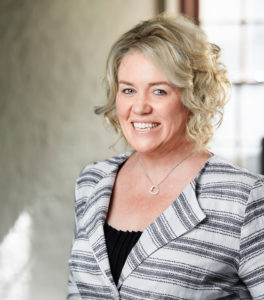A merger and acquisition can make or break a company. This organisation is taking a new approach to the process – one that puts people first.
A successful merger and acquisition (M&A) can make or break a company. Done well, you could increase your client network, harness new talent, skills and products, and improve your bottom line. But, as with any big move, there’s huge risk involved and a high chance of failure.
Research by Aoris Investment Management found that in the last 50 years around 60 per cent of Australia’s largest M&A deals have failed.
Here’s how one Australian company is taking a people-first approach to the M&A process.
Mergers and acquisitions: More than just financial alignment
Historically, people made M&A decisions based on financial due diligence, says James Hancock, Managing Director and Co-Founder of mwah. (Making Work Absolutely Human), a people and culture data platform and advisory that uses data-backed insights to make work more human-focused.

“Maybe they shared a meal to see if they got on. And if the financials stacked up, they were ready to make a deal,” says Hancock.
But in reality, financials are just one element of successful M&As, he says. One factor that’s often glossed over during the process is cultural alignment.
Quite often when an M&A happens, people plan for the change management after the change has already occurred, says Hancock.
He argues that a better approach is to build receptivity beforehand and let people know that change is coming. That way you can get them involved in what that change might look like.
“Every company has a distinct culture – ensuring they align should be a major consideration before mashing them together and hoping it works out,” he says. “Before embarking on the M&A process, it’s important to understand how another company’s culture is different, what might be a friction point and how both sides can work together.”
A people-first approach to M&As
In 2022, mwah. joined forces with a financial services company looking to scale its impact and acquire another company in the same industry.
“Our client wanted to grow with the right business and people to make a real and positive impact that would be sustainable in the long-term,” says Hancock.
It was important to their client that whoever they merged with had similar core values and could adapt to its flatter structure and agile work style, he says.
“Culture is absolutely critical to any decision to invest in or buy a company. It’s certainly critical in a merger – pre-decision and post,” says Rhonda Brighton-Hall FCPHR, CEO and Founder at mwah.

The company mwah. was working with saw the value of culture, and knew it would be a critical element of success, says Brighton-Hall.
“With both organic and acquisition growth strategies, culture was always going to be front and centre in their decisions,” says Brighton-Hall.
“Good mapping and measurement helped our client understand the parts of its culture that were important to protect as they grew. And where the differences were too great, we were able to advise on whether the return would be worth the risk.
“This process contributed to the decision to reject one potential acquisition target and select another. It proved to be critically important.”
In recognition of its innovative approach with this client, mwah. was nominated as a finalist for AHRI’s Technology Impact award.
“Being nominated for this AHRI Award proves we’re on the right track and that we are adding value for our clients. It validates our approach and shows a key capability that HR Leaders must deploy,” says Hancock.
Brighton-Hall adds: “[This nomination] also acknowledges the readiness of people in the industry to start thinking about culture and belonging differently. It’s not a nice-to-have, it’s a necessity that has real economic impacts.”
Navigating culture on the ground
Using its signature product, the mwah. Culture Dashboard, its client invited perspectives from its employees, as well as those from the companies it was considering partnering with. The technology helped the company pinpoint how two organisations could work together, identify any red flags and, ultimately, help them decide if the partnership would be successful.
mwah’s dashboard measures and maps diversity, identity, belonging, social connections and relationships, and helps them create a common language. In the case of its financial services client, mwah. worked with them to create a common language to redesign their ways of working and successfully bring two different organisations together.
“The dashboard is a way to hear views on how things work, particularly at an individual level,” says Hancock. “What’s important is that it’s democratic. We want to capture different voices in the organisation. It’s not a secret survey that sits in a cupboard or stays with the HR department, it’s transparent and accessible to all.”
He stresses that the culture dashboard is more than just a gamified score.
“Culture is not a winnable game. The dashboard helps companies have genuine data-driven conversations on culture.”
The return opportunity cost
During this process, mwah. evaluated two potential companies their client was considering merging with.
When evaluating the first organisation’s culture, it quickly became apparent this partnership wouldn’t work. mwah.’s client was agile, had a flat structure and was values-driven and collaborative. The first company it considered merging with was slow-moving and hierarchical, and did not prioritise diversity, inclusion or contemporary leadership. These issues were systemic and would likely cause significant cultural issues down the line.
“This process helped our client prevent a multimillion-dollar mistake,” says Hancock.
“Culture is not a winnable game. The dashboard helps companies have genuine conversations around culture that are driven by data.” – James Hancock
By preventing a merger with a company that wasn’t culturally aligned, mwah.’s client prevented direct financial losses, for example, transaction costs or reselling the business if the partnership didn’t work. It also avoided other indirect costs, which might include losing key talent and the stress of fractious change.
The second company mwah.’s client evaluated demonstrated far stronger culture alignment and common priorities. Critically, the second company also had the desire to be agile and future-facing. By articulating the difference in cultures prior to acquisition, both teams were receptive to understanding the value each brought to the equation, and could co-curate and co-design new ways of working as one business.
An early success was a lack of turnover in both organisations.
“When organisations come together, turnover can be high,” says Hancock. “During this process, our client only saw one person leave.”
Valuing proactivity over reactivity
Thanks to this evaluation process, mwah.’s client is more likely to be aware of potential friction points down the line and plan for them. It was able to account for how the two different organisations work, plan for how they could work together, and identify culture carriers, communicators and trusted leaders.
“We’ve moved way beyond purely financial due diligence. This is real culture due diligence,” says Hancock. “It’s a more powerful way to bring together qualitative and quantitative insights to be able to focus on the right workplace practices.”
Don’t miss the chance to attend the 2022 AHRI Awards, hosted in Melbourne on 1 December. Come and celebrate all the hard work done by your HR peers to help organisations thrive in the new ways of working. Book your spot now.


M&As cannot work out 100% by their very nature. You can work on cultural values all you like. The key factors are psychological for Some, psychosocial for others, amongst other interpersonal issues. That said, it’s a work in progress, and a multi-faceted learning opportunity. Nothing is or can ever be perfect. Humans are both highly individual and collective animals…